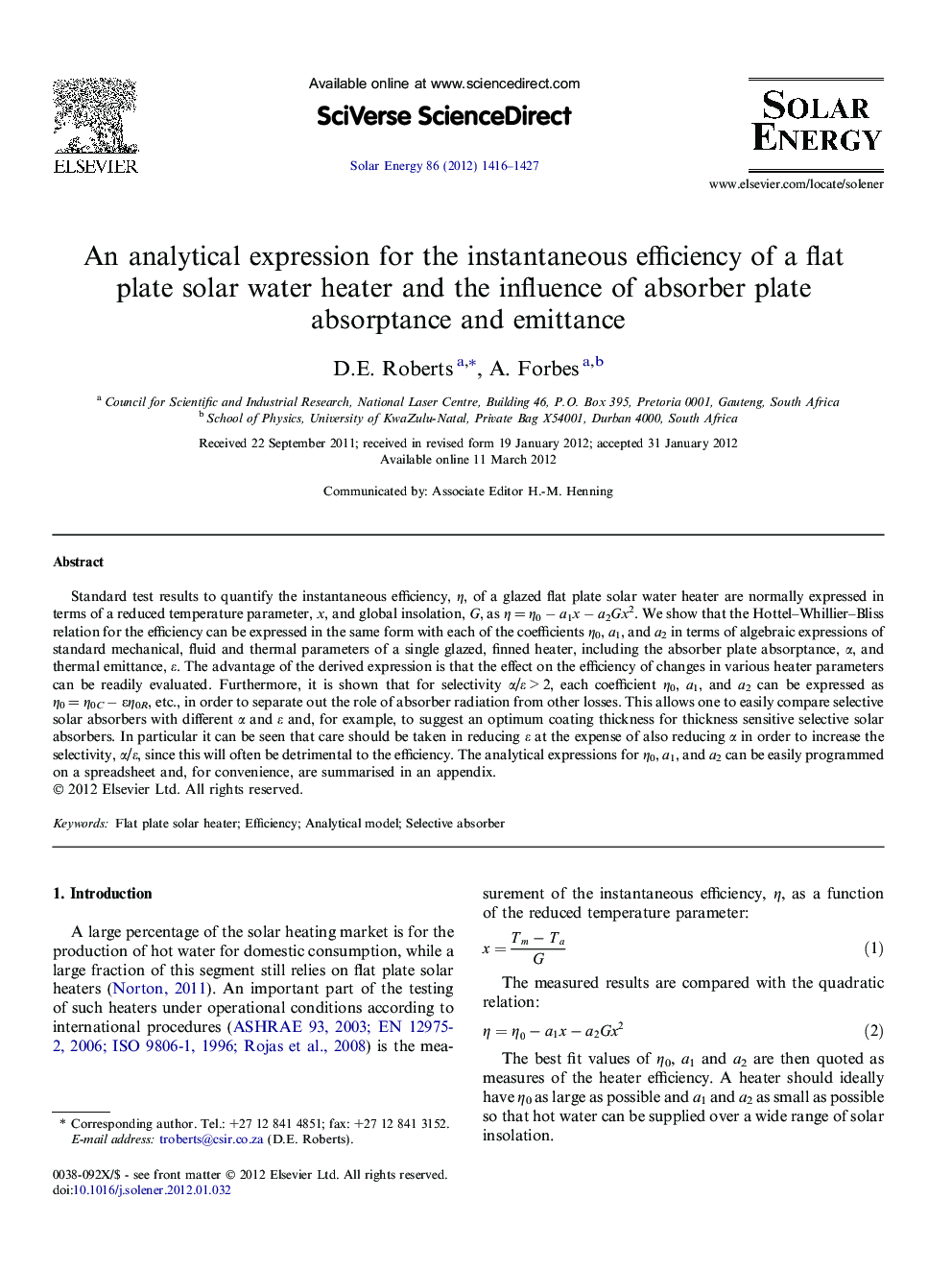| Article ID | Journal | Published Year | Pages | File Type |
|---|---|---|---|---|
| 1551083 | Solar Energy | 2012 | 12 Pages |
Standard test results to quantify the instantaneous efficiency, η, of a glazed flat plate solar water heater are normally expressed in terms of a reduced temperature parameter, x, and global insolation, G, as η = η0 − a1x − a2Gx2. We show that the Hottel–Whillier–Bliss relation for the efficiency can be expressed in the same form with each of the coefficients η0, a1, and a2 in terms of algebraic expressions of standard mechanical, fluid and thermal parameters of a single glazed, finned heater, including the absorber plate absorptance, α, and thermal emittance, ε. The advantage of the derived expression is that the effect on the efficiency of changes in various heater parameters can be readily evaluated. Furthermore, it is shown that for selectivity α/ε > 2, each coefficient η0, a1, and a2 can be expressed as η0 = η0C − εη0R, etc., in order to separate out the role of absorber radiation from other losses. This allows one to easily compare selective solar absorbers with different α and ε and, for example, to suggest an optimum coating thickness for thickness sensitive selective solar absorbers. In particular it can be seen that care should be taken in reducing ε at the expense of also reducing α in order to increase the selectivity, α/ε, since this will often be detrimental to the efficiency. The analytical expressions for η0, a1, and a2 can be easily programmed on a spreadsheet and, for convenience, are summarised in an appendix.
► We expand the Hottel–Whillier–Bliss efficiency relation as η = η0 − a1x − a2Gx2. ► We express each coefficient as an algebraic function of physical solar thermal collector parameters. ► We study the influence of collector absorptance, emittance and selectivity. ► We estimate the percentage contribution of each physical solar collector parameter to the efficiency.
